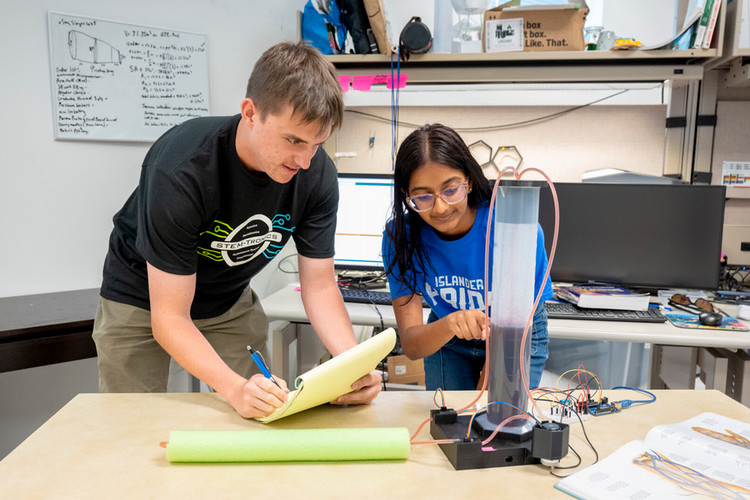Islanders Start Year-Long Oso Bay Water Quality Project
CORPUS CHRISTI, Texas –Texas A&M University-Corpus Christi is situated on Ward Island with Oso Bay on the southside and Corpus Christi Bay on the northside of the University. While Oso Bay is only two to three feet deep, it is home to various kinds of marine life, many bird species, and is a recreational hot spot for fishing and kayaking.
Because Oso Bay’s water quality impacts the health and function of plants and wildlife around Ward Island, a team of Islander students and faculty are conducting a year-long research project aimed at monitoring water quality in the bay.
“Oso Bay is a critically important ecosystem and it’s imperative to know how water quality is changing over time in response to population growth and land-use change,” said Dr. Jeffrey Turner, assistant professor of marine biology.
Since January, Turner and a group of six students collect water samples twice a month from eight sites within Oso Bay. They test for water temperature, salinity, conductivity, dissolved oxygen, pH, turbidity (water clarity), and enterococci bacteria.
The research is part of a continuing Directed Independent Study titled Advanced Methods in Environmental Microbiology led by Turner and supported by numerous faculty in the Department of Life Sciences, including Research Specialist Erin Hill with the Center for Coastal Studies, who was a driving force to start the program and get students interested in participating.
“Just physically being out there on a routine basis is so beneficial to being able to keep an eye on what’s going on,” Hill said. “It’s Ward Island. It’s where our University sits so we have to take an interest in it.”
After each sample is analyzed, the data is then sent to The Meadows Center for Water and Environment at Texas State University and can be accessed online by the public.
The data supplements other agencies that also collect Oso Bay water samples including the City of Corpus Christi, the General Land Office, and the Texas Commission on Environmental Quality.
“When cities and coastal mangers plan how they will manage water quality and coastal resources, the best-case scenario is they have data to make decisions,” said Turner. “This data will help our city and county make informed decisions, while training a new generation of scientists.”
Devika Tijerina, a senior studying biology and one of the DIS students, hopes the study brings awareness to the Coastal Bend community.
“It’s important we do this, so we know if the water is swimmable, if the fish are okay, and if it’s a healthy system,” Tijerina said. “Oso Bay gets runoff from agriculture, land, and wastewater treatment plants, so we are seeing how that’s going to affect the bay’s water quality before it hits the ocean.”
At the end of March, the students will attend the Texas Branch Meeting for the American Society of Microbiology and present the data they’ve collected.
Turner plans to apply for research funding to support the study long term. Until then, the study is funded by several Coastal Bend stakeholders such as The Center for Coastal Studies, The Coastal Bend Bays and Estuaries Program, the South Texas Botanical Gardens, and the Nueces River Authority. The various community groups have donated time and resources like water testing kits, transportation for students, and waders to ensure a successful program and provide students with hands-on research opportunities.
“Students benefit from research-based learning,” Turner said. “Authentic research experiences increase retention and graduation rates and introduce students to fields of study they may not have explored otherwise.”
For more information
After each Oso Bay water sample is analyzed, the data is then sent to The Meadows Center for Water and Environment at Texas State University. To learn more about the Center, visit https://www.meadowscenter.txst.edu/leadership/texasstreamteam.html.









































